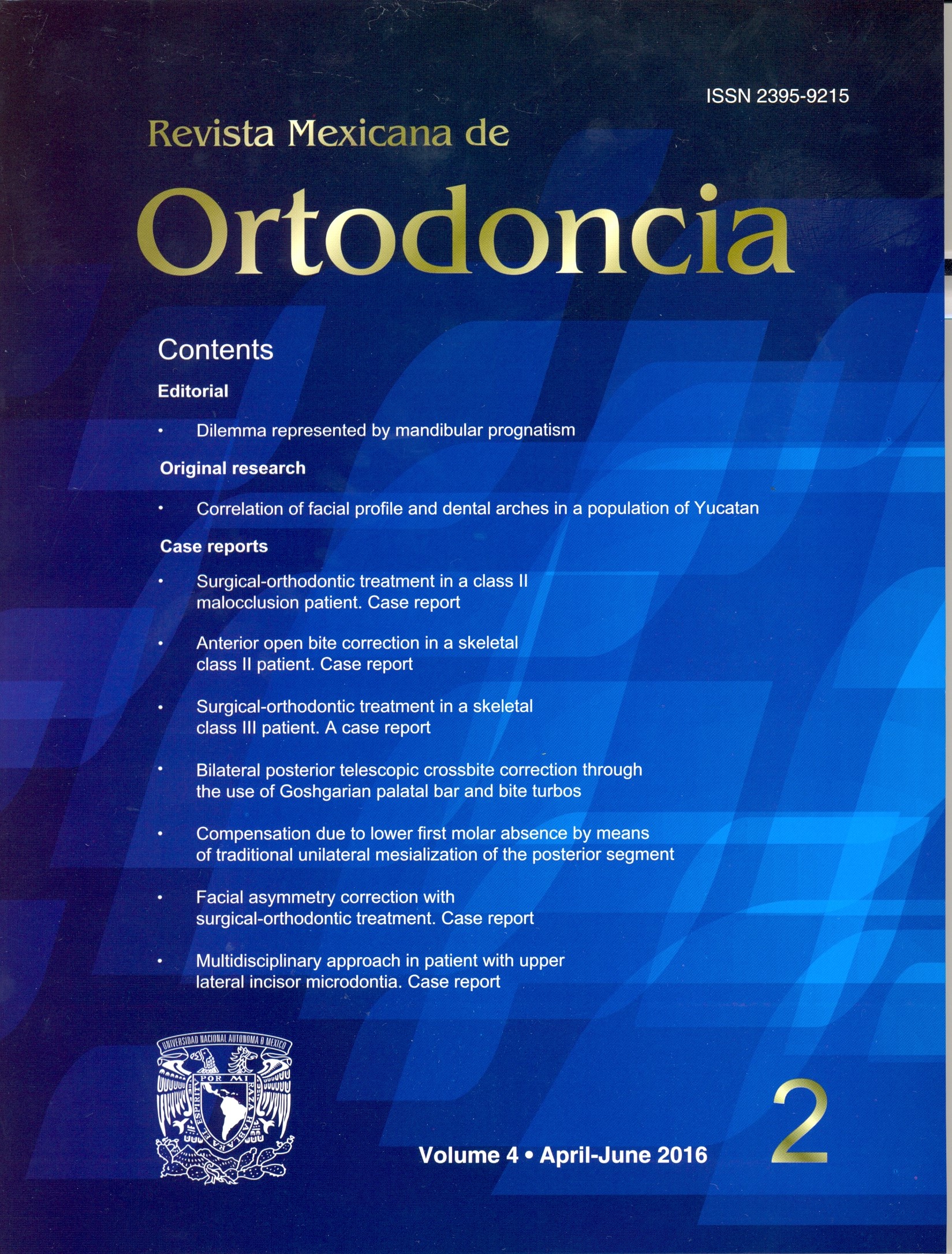Compensation due to lower fi rst molar absence by means of traditional unilateral mesialization of the posterior segment
Contenido principal del artículo
Resumen
This case was designed to compensate for the absence of the lower first molar by means of traditional mesialization of the posterior segment thus restoring the lost function and aesthetics. Mesial movement of the lower second and third molars was performed, while controlling the incisor position, when losing anchorage is required. Mesialization of the posterior segment is important to solve problems involving the absence of the fi rst molar since this procedure prevents tilting of adjacent teeth towards the edentulous space, extrusion of the antagonist, or periodontal problems, all of which induce a lack of support, stimulation and hygiene. The case reports a male patient of 31 years of age with a non-contributory medical history, who wished to «improve my crooked teeth». Clinical and radiographic analysis revealed an apparently symmetrical, dolichocephalic, hyperdivergent, skeletal class II due to maxillary protrusion. Intraorally, he presented a non-assessable molar class on the right side and a class I on the left; a non-assessable right and left canine class due to disocclusion and moderate crowding in upper and lower arch. Orthodontic treatment consisted in upper and lower first premolar extractions; anchorage and 0.022” Roth fixed appliances alignment and leveling was performed with the following archwire sequence: 0.014”-0.018” NiTi. For space closure, a 0.017” x 0.025” SS double keyhole loop archwire with Suzuki ligature was used. The segments were anchored for mesialization of teeth #47- 48, using bilateral class II elastics; second order bends were done for tooth #47 to parallelize the roots and short up and down elastics were placed for better intercuspation. Satisfactory facial, dental, aesthetic and functional results were obtained. In the retention phase, an upper and lower circumferential retainer were used.
